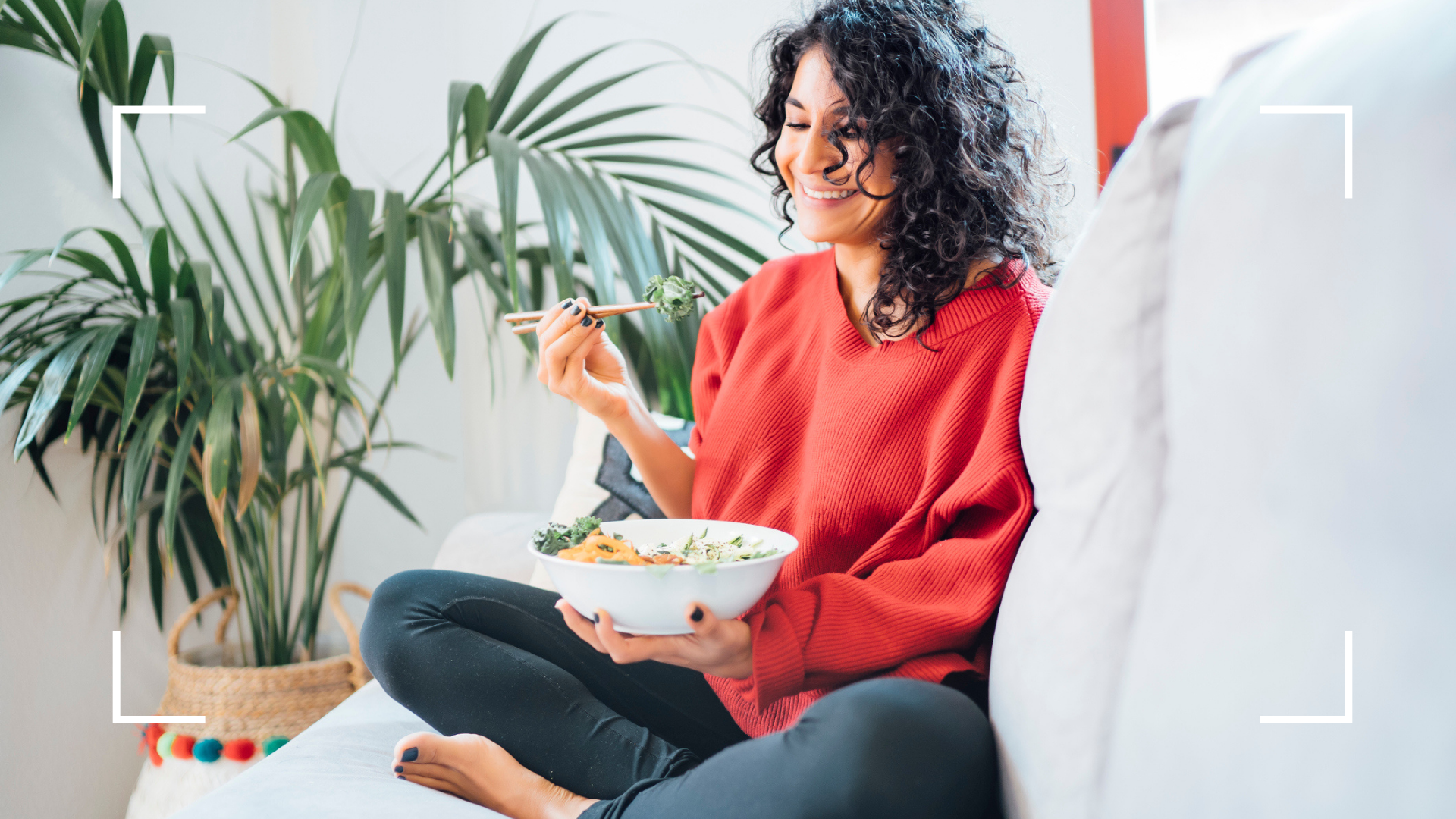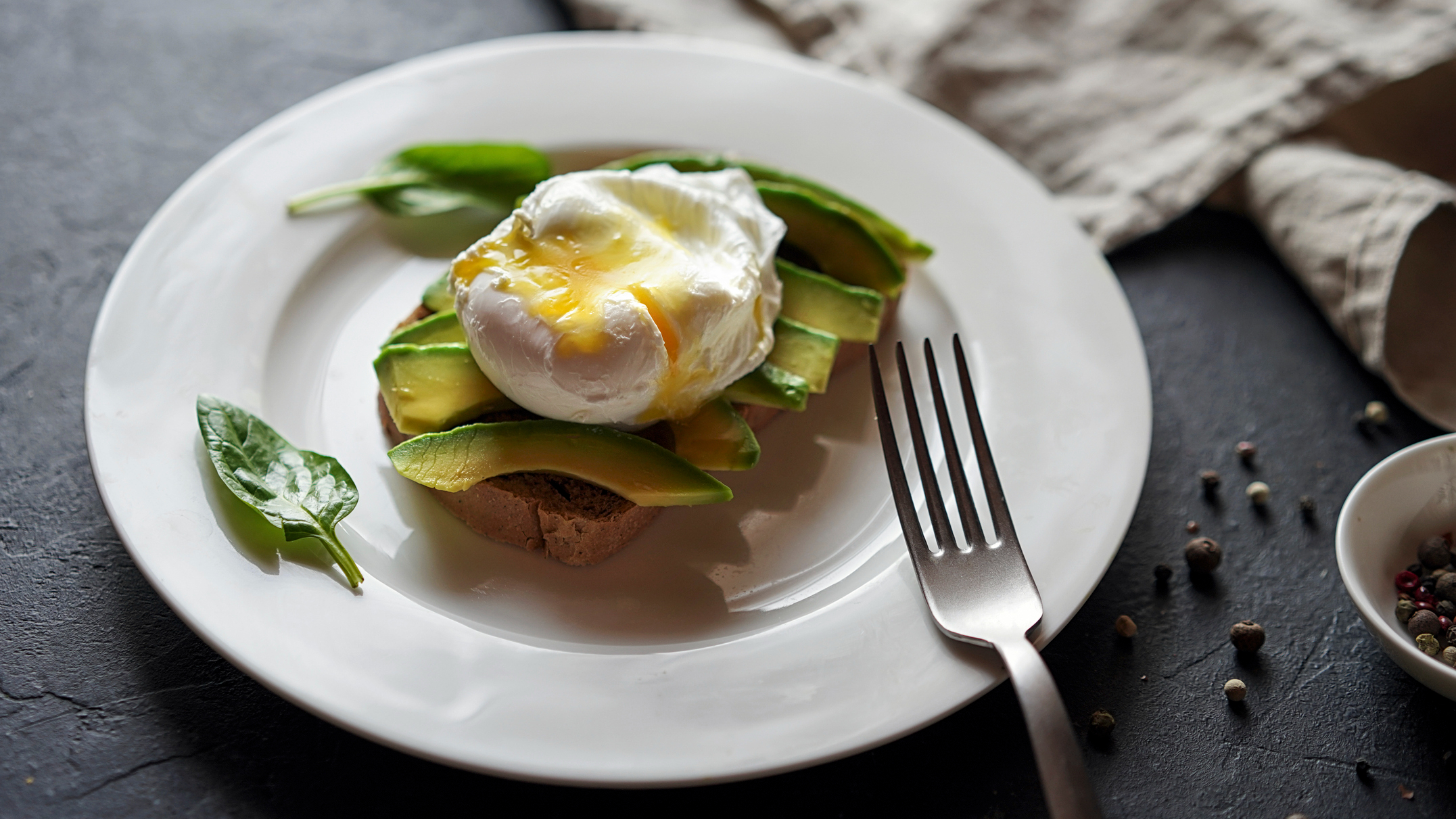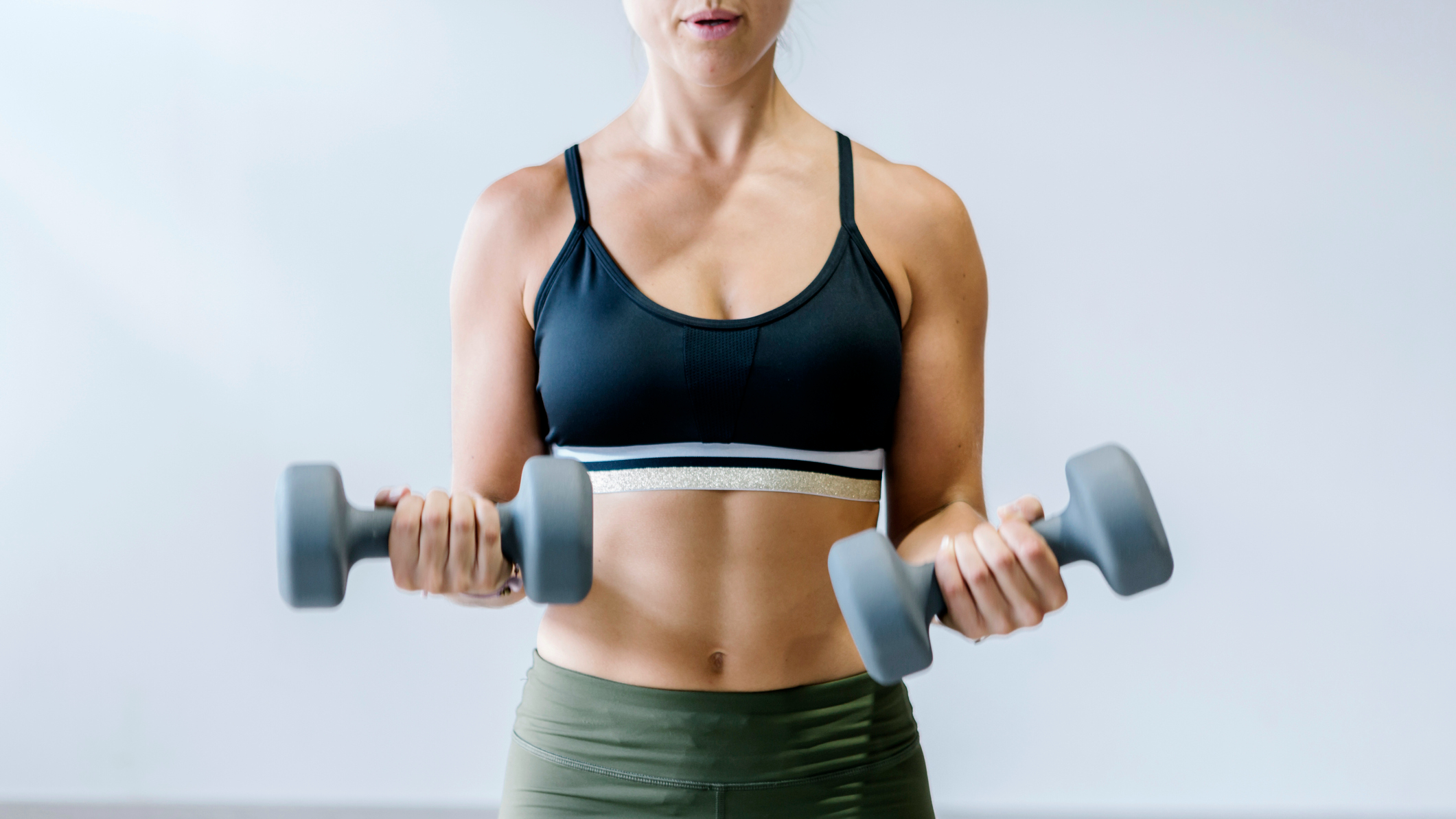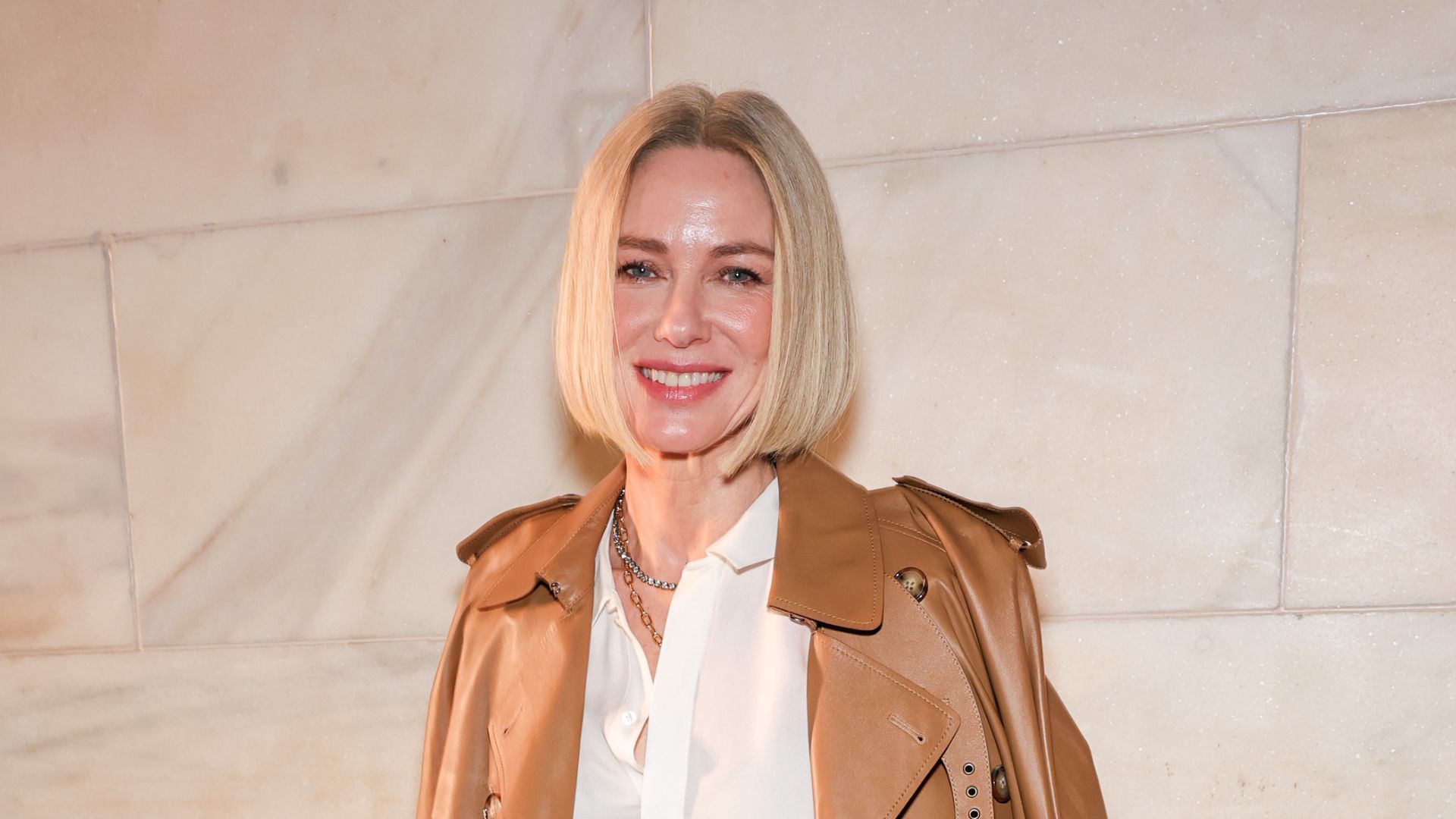How to lose a stone in a month—an effective plan for healthy, sustainable weight loss
If your goal is to lose a stone in a month, our expert-approved guide offers a sustainable approach to diet and exercise

It is important to remember that weight loss should always take place in a healthy sustainable way. If you are looking to lose a stone in a month, then you need to work towards that four-week goal slowly and gradually—doing a combination of daily movement and fuelling yourself on nourishing foods.
To give you some guidance, we've created a simple step-by-step guide with nutritionist Kim Pearson. She has shared her expert advice on what to eat and how to exercise along your journey. Many of her tips are inspired by the science-backed Mediterranean diet, and you might want to invest in some best running shoes and a fitness tracker as you increase your activity levels. If you have any health concerns, it is vital you speak to a doctor first before embarking on a new nutrition or fitness regime.
Why healthy weight loss is so important
While quick-fix, fad diets might sound tempting, they quite simply don't work. Much of the time the 'weight' that does seem to quickly come off is due to loss of water or lean muscle. Then there's the fact that highly restrictive eating regimes are almost impossible to follow, rendering them unsustainable. For example, the high-fat, low-carb ketogenic diet might help you lose pounds, but you risk symptoms like fatigue, headaches, mental fogginess, and irritability.
Indeed, you need enough calories to sufficiently fuel your body each day. According to the NHS, you should aim to lose around 0.5kg to 1kg per week until you reach the healthiest individual weight. In order to do this, you need to be consuming 500 to 600 calories fewer than you need.
How to lose a stone in a month—9 things to know

1. Have a protein-rich breakfast
Swap your morning cereal for a protein-rich breakfast. Protein fills us up and keeps us satisfied for longer, so aim to include it in all your meals during the month.
"Swapping your cereal or toast for a protein-based breakfast will help keep you fuller for longer and help to prevent mid-morning snacking," explains Pearson. "Research has shown that a high protein breakfast promotes weight loss by regulating our 'appetite' hormones, making how to eat less easier than ever before, as it makes us naturally want to eat less later in the day."
There are so many benefits of protein powder, so if you're stuck for ideas use one of the best protein powders to whizz up a shake. Mix it with low-sugar fruit like berries, a handful of spinach, a tablespoon of flax seeds, and some almond milk. Take a look at our smoothie recipes guide for more inspiration.
Sign up for the woman&home newsletter
Sign up to our free daily email for the latest royal and entertainment news, interesting opinion, expert advice on styling and beauty trends, and no-nonsense guides to the health and wellness questions you want answered.
2. Fill your plate with vegetables
"Carbohydrates are converted to sugar in the body and if these sugars aren't used for energy, they're likely to get stored as fat," explains Pearson, "Avoid foods like white rice, pasta, noodles, and bread. Cauliflower rice and courgette spaghetti make great alternatives to your standard rice and pasta."
At dinnertime, Pearson advises making sure at least half of your plate includes mostly green vegetables and other low-carb vegetable options, such as mushrooms or tomatoes. A quarter should include high-fiber foods like ancient grains and wholewheat alternatives to refined carbs.
3. Add good fats to all your meals
Pearson admits that it's imperative you eat fat—contrary to what you've been told. "You might think that eating fat leads to gaining weight, but actually the opposite is true. Fat is not only essential for health, but numerous studies have shown that a diet lower in carbs but higher in healthy fats is the best—and quickest—way to lose weight."
So the key point is healthy fats, but what sort of foods can we find this in? "Good fats can be found in oily fish, nuts such as walnuts, and seeds like flaxseeds and chia seeds, they are some of the best foods for weight loss. Aim to include a moderate portion of healthy fats at each of your meals during the month," Pearson says.
A great way to make sure you're sticking to portion sizes while also getting the right amount of key nutrients you'll need is through the best recipe boxes. Many subscription services offer lower-calorie alternatives to all your favorite dishes—including pasta, steak, and curry. They deliver all the spices, herbs, and pastes you'll need to discover new flavors. Plus, all the recipes to make an exciting range of lower-calorie dishes, straight to your front door.
4. Don't snack
"Whilst this does depend on the individual, for the average person who isn't following an intensive exercise program, eating three meals per day, five hours apart is ideal," says Pearson. "For example, you might have breakfast at 9am lunch at 2 pm and dinner at 7pm. It's also always a good idea to avoid eating late in the evening."
Pearson also advises against snacking and grazing between meals during this month. "It's better to eat a substantial meal at your main meals and then allow time in between meals. This allows your body the opportunity to use up some of your stored fat reserves, rather than purely focussing on ‘easy energy' from the food you've just eaten," she says.
5. Exercise five times a week

When it comes to workouts for fat loss, it's best to incorporate a range of training into your workout plan. "My personal trainer colleagues like to advise a combination of HIIT (high-intensity interval training) as well as weight training for quick weight loss," says Pearson. "Training that promotes muscle growth will also help to increase the body's metabolic rate. The more muscle we have, the more calories the body burns even at rest, so it's good for losing weight and maintaining weight loss, to help you keep the extra pounds off."
Strength training for women can specifically help with how to lose belly fat, and are among some of the best exercises to burn belly fat. It can include everything from the best bodyweight exercises to resistance band workouts and doesn't always have to involve weights if you don't have any dumbbells to hand.
6. Opt for low sugar alcohol
"Alcoholic drinks can contain a surprising amount of calories and sugar so moderating your alcohol consumption is important for weight loss," says Pearson. "Alcohol can also increase your appetite and compromise your willpower when it comes to food choices! So it's generally better to avoid it."
The standard alcohol recommendation is not to drink more than 14 units (aka six small glasses of wine) a week, so always stick within these guidelines as a maximum. "When you do drink, eat food first to reduce alcohol's negative effects and opt for lower sugar, dry wines such as Merlot, Cabernet Sauvignon, Pinot Noir, Chardonnay or Sauvignon Blanc," advises Pearson.
7. Have one treat meal per week
Pearson maintains that we should all have a treat now and again—just not that often. "Cutting out everything you love is likely to end up making you miserable," says Pearson, and we couldn't agree more. Moderation is everything when it comes to weight loss and for a program to be effective, it needs to be something you can commit to and stick to.
"Allow yourself one treat meal per week where you can eat whatever you fancy. Or, spread your treats over the week. This might be a small bar of dark (70%) chocolate, or equivalent, every day. Remember though—the more treats you have, the slower the weight loss will be, so don't have them too regularly," says Pearson.
8. Beware of hidden sugars
"Eating too much sugar is one of the fastest ways to gain weight," says Pearson. "If it's not used immediately for energy (like exercise), the body will convert sugar to fat to store for future use."
We all know that biscuits, cakes, chocolate, and sweets are high in sugar, so it's the foods with hidden sugars that we need to watch out for. "You might be surprised, but you'll find hidden sugars in cereal bars, stir fry sauces, salad dressings, and even breakfast smoothies," says Pearson. "Check the nutrition information to find out how much sugar is really in your food, and if in doubt, swap it for real fruits, or make your own sauces and salad dressings."
9. Keep track of calories and activity
Whether you use one of the best FitBits to monitor your diet and exercise, or an app like MyFitnessPal, keeping track of what you're eating, how often you're eating, and how much you exercise can help spot any issues that might be hindering your weight loss journey.
"I recommend using MyFitnessPal to record what you are eating over the month," says Pearson. "This is so useful in identifying unhelpful behaviors, as well as foods you might think are healthy, but might discover aren't." Calorie counter apps are also helping us tackle nutrient deficiency by giving users a clearer idea of where our diet is lacking in vital nutrients, such as iron, Vitamin C, Vitamin A, and B Vitamins.
w&h thanks nutritionist Kim Pearson for her time and expertise.
Amy Hunt is an experienced digital journalist specialising in homes, interiors and hobbies. She began her career working as the features assistant at woman&home magazine, before moving over to the digital side of the brand where she eventually became the Lifestyle Editor up until January 2022. Amy won the Digital Journalist of the Year award at the AOP Awards in 2019 for her work on womanandhome.com.
-
 I tested out the cooling sheets that were on Dragon's Den and actually got too cold at night
I tested out the cooling sheets that were on Dragon's Den and actually got too cold at nightEthical Bedding's Eucalyptus Silk Sheets are the perfect option for hot sleepers. I haven't had a cooler night's sleep than on these sheets.
By Laura Honey
-
 Everyone in New York is wearing a trending colourway that will elevate your everyday wardrobe, including Naomi Watts
Everyone in New York is wearing a trending colourway that will elevate your everyday wardrobe, including Naomi WattsSpotted head to toe in a rich, warm tan at the Ralph Lauren show, Watts shows us exactly why we should be investing in these classic hues
By Molly Smith
